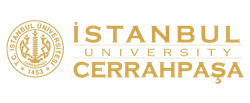Objective: The purpose of this study is to investigate the opinions of nurses about their working systems and their state of being affected by these systems. Methods: The universe of this descriptive study consisted of 1657 nurses working in 4 state hospitals and a university hospital in Trabzon city center. Having been selected by using 5% proportional stratified sampling technique 477 nurses accepting to respond the research survey constituted the sample. After receiving written permission from the hospitals and verbal consent from the nurses, data were collected in January- June 2014 using face to face interview technique. The survey questions were prepared as closed and open ended questions including how nurses' demographic characteristics and working hours affect their physical health, daily activities such as sleeping and eating layouts, social and family life, psychological health and safety. The data evaluated consisted of numeric values, percentage distributions and Chi-square. Results were evaluated at a significance level of p < 0.05. Findings: 56.2 % of the nurses were 30-39 years old, 38.8 % had 15 years or more work experience, 47.1 % worked day and night, 64.6 % worked as ward nurses and 35.2% had a health problem. %87.4, 87.2%, 95.2%, 77.6 % of the nurses reported that working hours had one or more adverse effects on their social and family life, psychological, physical health and their own safety respectively. Conclusion: Shift work and rotating shift schedules were found to have adverse effects on nurses ‘physiological, psychological health, social life and their own safety.


.jpg)


